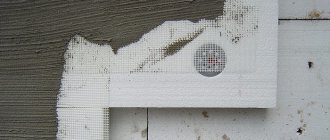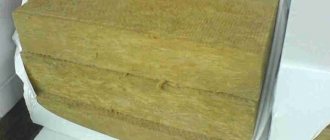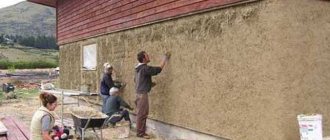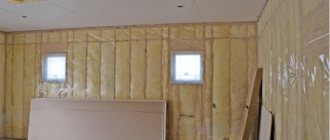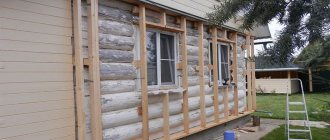To preserve heat in winter, plastic windows are insulated.
Particular attention should be paid to the window sill. It very often turns out to be a source of cold penetration due to the flaws in it.
If you properly insulate the window sill, it will significantly reduce heat loss in the room and save heating costs.
We will tell you further about how to insulate the window sill of a plastic window.
Causes
There are three main reasons why it blows from under the windowsill.
Blowing is generated by:
- initial processing of the bottom of the object with low-quality building materials (cement and construction waste);
- installation wizard errors;
- deformation of the foam layer for installation (drying out of the material during operation).
Failure to timely correct damaged elements will lead to wear and tear of the entire structure and an increase in sources of cold penetration.
Advice: if the window system was installed by a company technician, it is better to check whether the warranty period is valid. If violations during installation were made by specialists, then according to the rules they will eliminate them.
Otherwise, the work can be done in person.
Possible difficulties and errors, their consequences
When insulating window sill boards, it is necessary to avoid process disruptions:
- After installing the canvas, there must be sufficient load on it. This is necessary so that the window sill maintains a horizontal position. Otherwise, the foam will be able to lift one of the sides and warp the canvas.
- If there are two windows in a room on the same wall, then insulation should be done simultaneously. Window sills should be placed not one at a time, but in combination. To do this, pull the cord and align the canvas along it. Otherwise, the level and depth of installation of window sills will vary.
Before starting work, you should carefully read the instructions. This will help avoid mistakes and mistakes.
How to insulate the window sill of a plastic window
It is advisable to carry out insulation activities in warm and dry weather. Many insulation materials should not be used in winter. Their quality suffers from the cold.
The operating algorithm is simple:
- Get rid of insulation material that has lost its function.
- Clean the area around the window sill and its joints from dust.
- Introduce new wind-proof building material for plastic windows.
The work of foaming/sealing cracks is accompanied by dismantling the decorative coating “before” and plastering with the use of a new coating “after”. To do this you will need to remove the window sill.
Note: if the masonry near the window is stone, then sometimes it is more expedient to dismantle it. Existing hollow areas need to be filled.
The general operating procedure is as follows:
- Remove the window sill completely.
- Clean the area of the wall where it was located from debris and dust and determine whether there are any deformation areas.
- Repair existing cracks using building material.
- Allow the structure to dry.
- Remove excess insulation and eliminate unevenness.
- Apply primer and antiseptic over the surface.
- Coat the joints of the elements and all corners with a sealant.
- Treat the wall area with plaster.
- Return the window sill to its original place in a level and correct position.
If the work is carried out carefully and materials are tightly introduced, the better the energy-saving properties of the entire window system will become.
Cover with sealant
This method is suitable if the gap between the window sill and the window frame is not very large . In addition, compared to other methods of combating drafts, this is the cheapest.
Defects are eliminated using a transparent sealant. Before using it, the gap should be cleaned of dust and dirt, degreased, and dried.
The gap between the frame and the window sill must be cleaned of dirt
Then, using the tube nozzle, apply the maximum possible amount of the substance until it is completely filled.
For the easiest way to eliminate a defect, use a sealant
To get a beautiful seam, run the edge of a 10-ruble coin along it. Do this in a continuous motion to avoid crooked seams.
The advantage of this method is that all the work takes a matter of minutes. Disadvantage: fragility. After two years, the sealant begins to peel off and darken.
Dismantling
Insulation of window sills begins with removing them from under the window. The operation is carried out using one of two dismantling options.
First method
It is necessary to very carefully remove the layer of plaster located under the slab. When wallpaper is pasted on the surface, remove it after soaking it in water.
Algorithm:
- The material is knocked down to the base of the wall. This gives full access to the structure, and it becomes easy to find cracks and chips.
- Dismantling requires breaking off the plaster near the window sill and slope.
- To complete the process, you need to get rid of the foam remaining from the initial installation of the object.
Important: the cut is made as carefully as possible; it is easy to cause cuts on the plastic.
Afterwards, just pull the window sill slightly towards you and down. Do not use great force when removing - damage to the “sensitive” plastic coating may occur.
Another dismantling method
It is possible to remove the window sill of a plastic window using a fine-toothed hacksaw with a long and stiff blade.
Instructions:
- The hacksaw is inserted under the object, then the old foam is cut along the entire length of the window sill.
- On the sides of the slopes, the sealant is cut, which created reinforced fastening of the structure.
- Carefully and slowly, the window sill rises upward and then extends towards itself.
To complete the dismantling, you need to clean the base of the window. Any dust collector will remove debris and expose all existing chips and cracks in the space. They are first covered with new insulation.
Tips for use
To avoid any difficulties with the window sill during operation, you should initially take a responsible approach to the choice of the manufacturing company. If a high-quality system is initially selected, it will definitely last for a long time. It is worth performing the maintenance work recommended by the manufacturers annually, taking all necessary preventive measures. Do not violate the operating rules and overload the window sill.
By following the listed recommendations, you can significantly increase the service life of the structure and prevent heat loss.
Choosing material for window sill insulation
When deciding how to insulate the window sill of a plastic window, you choose from two building materials.
Polyurethane foam
Before installing the window sill, the perimeter is foamed with installation insulation. Foam is a polyurethane foam sealant in aerosol packaging. The mixture is resistant to UV rays and has good adhesion.
A can of foam costs about 200-300 rubles. European brands have proven themselves well in the market.
How to work with it:
- The work progress includes the distribution of two intersecting lines in the center. They make it easier to attach the slab to the window base.
- Securing an object at the base of the glass opening.
- How level and correctly the window sill is installed is checked using a building level.
Insulating the sill of PVC windows using polyurethane foam is an easy, quick and straightforward process. However, it has its own peculiarities. The mixture, after foaming, is subject to expansion within 1 day. To prevent the mounted object from moving and the position being skewed, the window sill must be firmly fixed. You can place a heavy flower in a pot or a 3-liter jar filled with liquid on top. After 24 hours they are allowed to be removed.
Attention: polyurethane foam is used strictly in accordance with the conditions specified by the manufacturer. They are described on the packaging of the material. Most manufacturers indicate that work with this insulation is carried out at an air temperature of at least 18 °C.
Acrylic sealant
As an alternative to foam, acrylic sealant is used for installation.
This is a non-toxic product made from a polymer composition. It is suitable for external and indoor work. Advantages of insulation:
- low price;
- easy to use;
- UV tolerance;
- fire resistance;
- the material can be painted;
- high degree of adhesion.
With acrylic insulation, a more reliable and comprehensive seal against blowing is created.
How to use: apply the product to small cracks and all joints.
Note: at the moment of covering, excess substance often accumulates. To level the surface, use a classic spatula or any cloth. The base of the window opening is treated with a primer; less often, putty is used for leveling. It is distributed in a single layer, along marks pre-designated by the building level.
Types of insulation
For thermal insulation of window sills, various types of thermal insulation materials are used. The choice of the appropriate option directly depends on the problems encountered. The most widespread are:
- polyurethane foam. With its help, various cracks are sealed. The material freely penetrates into various cracks and cavities, increasing the heat and sound insulation characteristics of the structure. When using it, it should be taken into account that under the influence of sunlight the foam begins to gradually crack and then collapse;
- silicone based sealant. With its help you can eliminate small gaps. At a relatively low cost, the material has good water-repellent characteristics;
- mineral wool. Thanks to its special structure, it has high thermal insulation properties. When using it, it is possible to maintain heat in the room, preventing the penetration of cold from outside, even in fairly severe frost. When using mineral wool, the sound insulation properties of the window structure are improved;
- penoizol. The special design of the material allows it to retain its properties for at least 30 years. The thermal insulation layer formed with its help retains its shape well, since penoizol does not expand under significant temperature fluctuations. It is quite difficult to achieve thermal insulation properties on your own: you will have to turn to professional builders for help;
- polyurethane foam. The porous filler of artificial origin demonstrates high technical characteristics. The raw materials used are polyol and polyisocyanate, which are subjected to special processing in a high-pressure apparatus. Using this insulation yourself is associated with a number of difficulties. As a rule, only professionals insulate window sills using polyurethane foam;
- Styrofoam. A classic material with low weight and affordable cost. Has good thermal insulation properties. After insulating the opening, it must be plastered.
Installation of a plastic window sill
When the surface of the window frame is prepared, you can install a PVC window sill. You need to place the object at the bottom of the window on wooden supports. The thickness of the wood should correspond to the distance from the double-glazed window to the very bottom of the window sill. Proportions can be easily measured with a standard tape measure. Wooden supports will create the required design rigidity. It will maintain the strength of the system during its operation.
After attaching the object to the base, the cavity below is filled with insulation (foam or acrylic sealant). To avoid leaving voids and small cracks (places for cold air to pass through), you need to seal the joint between the inside of the plastic window sill and the mounting profile. Next, to securely fasten the wooden supports, foam is applied again. It foams the embedded plastic object and the wall joint from the outside.
Step by step guide
The procedure for performing thermal insulation work directly depends on the location. To obtain a high-quality result, work must be performed inside and outside the house.
Insulate outside
Thermal insulation of plastic window sills from the outside is carried out by high-quality finishing of window slopes and ebb. If their insulation has not been carried out, cracks will form at the junction of the window block and the window sill, through which cold air will flow into the house. Often, due to the lack of external insulation, fungus appears on the inner surface.
The loss of performance characteristics of polyurethane foam under the influence of ultraviolet radiation leads to the fact that many specialists refuse to use it when sealing cracks. For a similar reason, they refuse to use plaster. Foam plastic is used as a thermal insulation material for external insulation.
The sheets are glued to the outer slope using special glue. To ensure sufficient strength of the formed heat-insulating layer, a reinforcing mesh is used. After the heat-insulating layer is securely fixed, the surface is plastered and painted in a suitable color.
Insulate inside
If the work is carried out from inside the house, the work is carried out as follows:
- the old window sill is dismantled;
- the base is completely cleaned and prepared;
- we drill holes under the window profile through which polyurethane glue will be blown in for additional insulation of the window;
- We attach the hydro-vapor barrier tape using special fasteners and foam it with polyurethane foam;
- cut to size and lay a sheet of polystyrene foam;
- Apply the mounting foam in a layer of sufficient thickness. It should be sufficient to securely fix the window sill in the correct spatial position;
- installing a window sill.
How to seal the gap under the window sill after installing plastic windows
For thermal insulation, the same building materials are used: sealant and polyurethane foam. They can quickly insulate the window sill. Before starting work, it is better to treat the concrete surface and brickwork with an antiseptic or sealant.
Process Recommendations:
- It is easier to fill the gap between the wall and the window sill with foam for installation along the entire object.
- Small cracks in the thermal insulation or wall are best treated with sealant. Silicone will penetrate deeper than other building materials and will cover even small gaps.
- When the question is how to cover the cracks under the window sill from the outside of a plastic window, the solution is to walk along the slopes with extruded polystyrene foam URSA XPS. This will protect against frost.
Leveling of elements and openings (after all work) and waterproofing is done with cement mortar or covered with a dry mixture.
Required Tools
Rice. 3. Tools for insulating the window sill
To insulate plastic window sills, you may need the following tools:
- hammer;
- perforator;
- chisel;
- putty knife;
- building level;
- fine-toothed hacksaw with a hard and long blade;
- knife.
During installation and dismantling work, you may need a broom or a brush with stiff bristles, as well as a vacuum cleaner to clean the room.
Joint processing
To give the insulated window sill a finished shape, you need to plaster the slopes. To carry out the operation yourself you will need:
- cement mortar or standard dry mixture, which is distributed with a spatula;
- after the materials have dried, do another final coating of the slopes;
- Rub the entire coating area with sandpaper to level it out.
For aesthetics, plastered areas can be painted. If there was wallpaper before the work, you can paste new ones.
Note: the assembly seams cover the whole, but only partially the window frame.
Closing the gap with a profile
This method is based on creating additional protection for the sealed seam using a plastic profile.
For work you will need the following materials:
- Transparent silicone sealant;
- Stationery knife, sharp scissors;
- Plastic profile in internal corner configuration.
Armed with everything you need, get to work.
Algorithm of actions
- First, measure and cut the profile to the length of the window frame with a margin of 2-3 cm.
- Then cut off its perforated part so that there is a distance of about 1 cm from the curved plate, and 2 mm from the bend of the right angle.
The profile cutting line must be sharpened - Using a utility knife, sharpen the cutting line by scraping off the corners on both sides. This is done so that this part of the profile easily fits into the crevice, thereby creating a barrier for air entering the room.
- Make holes in the lower corners of the window with a depth of one to one and a half centimeters.
Holes must be made in the lower corners of the window - Clean the joint between the frame and the window sill from debris, wash, degrease, and wipe dry.
The joint between the frame and the window sill must be clean and free of grease. - Seal the gap by filling it with caulk.
The gap is sealed with sealant - Apply an even layer of sealant into the holes made and onto the joint.
- Apply a thin layer of sealant to the profile, insert one end into the hole, and insert the pointed edge of the cutting line into the slot.
The profile is installed in the joint between the window and the window sill - This way the entire profile is adjusted. Its opposite edge is inserted into the second hole.
- Press the corner tightly and hold for several minutes for better fixation.
- Sealant that has squeezed out can be carefully removed after hardening.
The disadvantage of this method is that it is labor-intensive and time-consuming. However, the result is impressive: a beautiful, durable corner in place of the black gap.
Now you know exactly what to do when it blows between the window sill and the plastic window. But sometimes this knowledge is not enough, since the source of the draft may be under the windowsill. A completely different method will be used here.
Insulation of slopes from the inside
Before thinking about how to insulate a window sill, you need to find weak elements under the window. You will need to determine where exactly it is blowing. Common sources of drafts are the joints between the slab and the plastic. The second most popular “nuclei” of heat loss are cracks and crevices. They appear from mechanical stress and thermal exposure.
To cover up all the weak spots, you need to remove the previous insulation and apply a sealant along the entire perimeter of the slope.
Briefly about the main thing
Many people believe that replacing ordinary windows with plastic double-glazed windows will solve the problem of cold wind and drafts. Unfortunately, this does not always work out. Often during the installation process, craftsmen leave gaps, especially under the window sill. Also, holes may appear due to time in the wall itself, due to drying of the mounting foam and other reasons.
It's easy to fix this on your own. It is necessary to remove the window sill, remove the old foam, coat the cracks and corners with sealant. Then apply mounting foam again, position and level the window sill and secure it with a weight so that it does not move. When everything is dry, the excess foam is removed, the wall is plastered, primed and painted. Nothing complicated, the main thing is accuracy and caution when working.
Question
Write in the comments if you had problems with drafts when you had plastic windows? Did you do the repairs yourself or turn to specialists?
Insulating a window from the street
Sometimes, after independently insulating the places under the windows, or after the work of the craftsmen, it begins to get drafty in the room, or at cold temperatures the windows fog up. To prevent this from happening, they insulate the slopes from the street.
Attention: the frames of PVC double-glazed windows must be pressed from the outside with brickwork or insulation. And it’s worth closing them by 1/3 of their width. This condition cannot be violated.
Insulation of a plastic window sill from the street includes finishing the drainage system and window slopes from the outside. If this is neglected, the cold will pass inside through the cracks at the joints of the double-glazed window frame and the window sill. Without outdoor insulation, fungus and mold may appear at the bottom of the PVC window.
Help: on the street it is not enough to apply foam or fill the cracks with plaster. These building materials are not practical on the outside. In bad weather conditions they will begin to collapse and crack.
Foam plastic is suitable for outdoor work. Layers of this building material are glued to the outer surface of the slopes with a special adhesive solution. A reinforcing mesh is laid on top of it. To make the view beautiful, the slope is plastered and, if desired, painted with façade paint of the selected color.
Exterior insulation method
Process in detail:
- Treat all surfaces with waterproofing material;
- Lay a layer of putty.
- Coat the entire area with foam. without leaving a single gap.
- Install the window sill according to the building level.
- Secure the object with additional weight (place heavy objects: books, a filled jar, etc.).
- When the foam dries, the excess is cut off with a knife flush with the wall.
How to putty the mounting foam under the window sill? After beating the plaster on the slope, they pass over its surface with a cement or dry mixture, leveling the walls. The open area of the foam is completely covered with the dry mixture. Dried building materials and the working area of the wall are treated with a primer. At the end it is possible to seal the object and drain with paint.
Help: the primer protects against moisture seepage, dries and is easy to apply.
An important touch is the high-quality processing of the ebb and the installation seam underneath it. To avoid the accumulation of moisture near the window, the low tide angle is created at more than 5 degrees, 3 cm away from the wall. The side edges are bent and protected with end strips. To prevent water from seeping through, seal the joints.
It is important to do this stage before interior work, since the joining seams will no longer be accessible.
How to determine heat loss?
If the house becomes cold, you should first make sure that the cold air is coming from the window opening. Sometimes this opinion arises erroneously. If the window system's characteristics do not meet regulatory requirements, at a certain point difficulties with air circulation begin to arise. Inside the room, a cold air mass begins to move near the window. It is because of this that there is a feeling that the outflow of heat occurs through the window.
To check at home, use a burning candle, lighter or regular matches. If there is even a slight deviation, we can safely talk about poor tightness of the window unit. Through this leakage, heat flows out of the room. Near a well-mounted structure, the flame remains vertical, and therefore you will have to look for the cause separately.
When checking the tightness of the opening, you should check the window system along the entire perimeter. This will help identify other possible problems. Most often, there is a small gap at the junction of the wall and frame. The presence of problems in this place indicates that the problems are in the area of the window sill, which was installed incorrectly. Due to a violation of the installation technology, cracks formed under the window sill.
All of the above methods only allow us to approximately determine the area of heat leakage, since with a small gap the candle flame can maintain its position. For best results, it is advisable to use a thermal imager. This tool allows you to accurately determine the location of heat loss and its intensity.
Attention! To use a thermal imager, you do not need to seek professional help. The instrument can always be rented.
How to avoid the appearance of fungus on slopes
For example, there is a wall made of aerated concrete. There is no insulation of the facade. The temperature outside the house is minus, and the temperature inside is positive. Let’s say it’s 26°C outside and + 20°C indoors. Window installed.
In this design, a window (even a high-quality one with several cameras and energy efficient) is a cold bridge. Those. where the window is installed, the thermal contour of the wall is weakened, and the effective thickness of the aerated concrete (which affects the thermal resistance of the entire structure) is actually reduced, and the slope freezes. This can be visualized like this:
Replacing a window sill in a wooden house
The installation scheme for a plastic window sill in a wooden house is very similar to the process performed in an apartment. First, the old wooden window sill is dismantled and the base is prepared. The side slopes must be put in order so that the plastic part can freely take its place.
In order not to cut and freely attach the plastic window sill, it is better to cut the sides from wood. For this work you will need a chisel and a hammer. This creates grooves where the fastening will be made. It happens that they may already be ready and have a wooden window sill in them.
The window sill panel is installed in the grooves
Once the grooves are ready, pads are placed on the base of the opening. Do-it-yourself installation of a plastic window sill into the opening is done only on them. The position of the stands can be fixed so that they do not move under the mounted element. Before fixing the product, you need to check the position of the plate. Afterwards it is fixed and the voids under it are filled with polyurethane foam . Many people ask the question of how to install a window sill in a different way. But foam is the best and most effective option.
Methods of fastening window sills
Having decided on a high-quality, suitable material, we choose a method by which you can attach the structure to the glazing frame.
Components and steps for installing a window sill on balconies with a parapet or loggias. Mounting methods are as follows:
- Installation using polyurethane foam and self-tapping screws.
- Fastening with clamps or special brackets.
- Use of metal brackets.
Do not forget that each installation option has both its individual advantages and disadvantages, which are initially taken into account based on the weight, size, and conditions of the balcony room.


